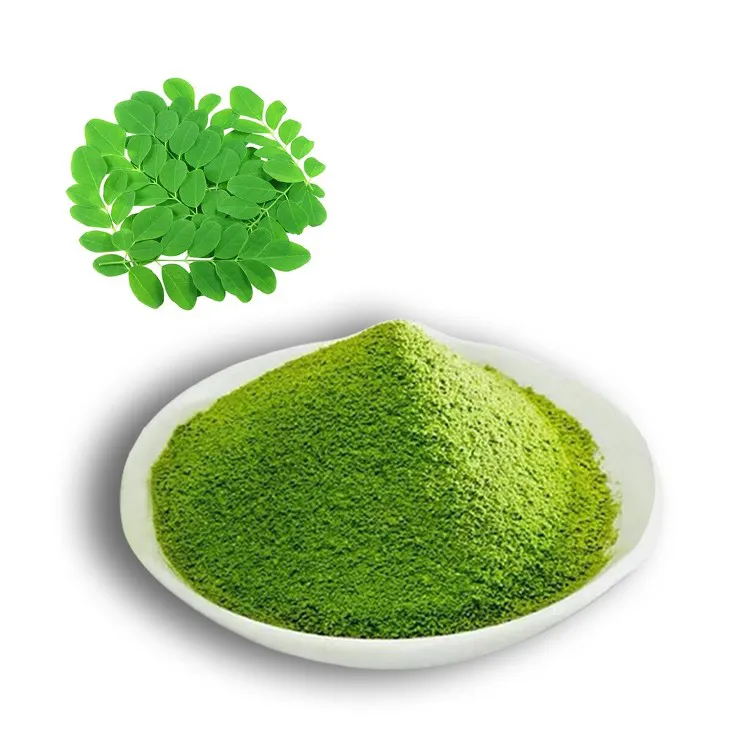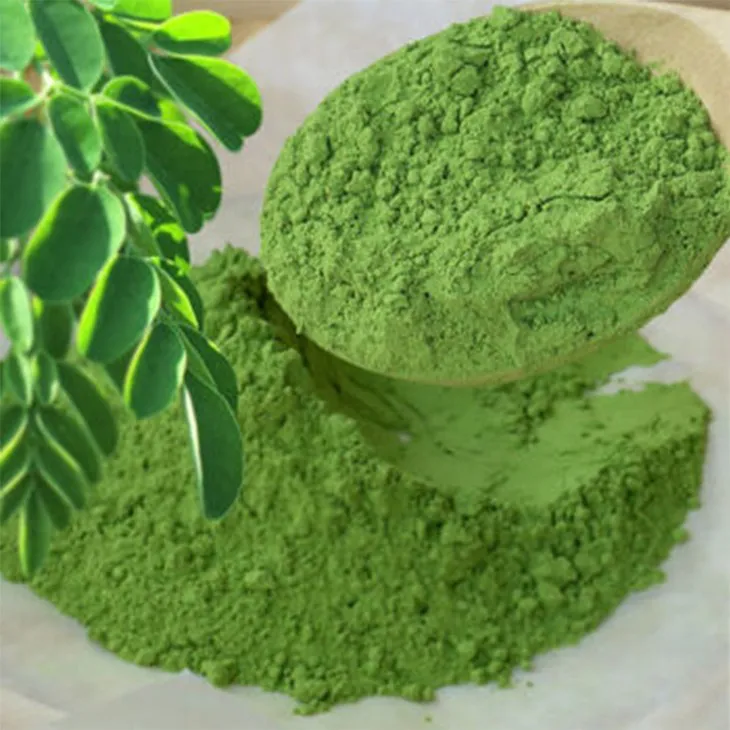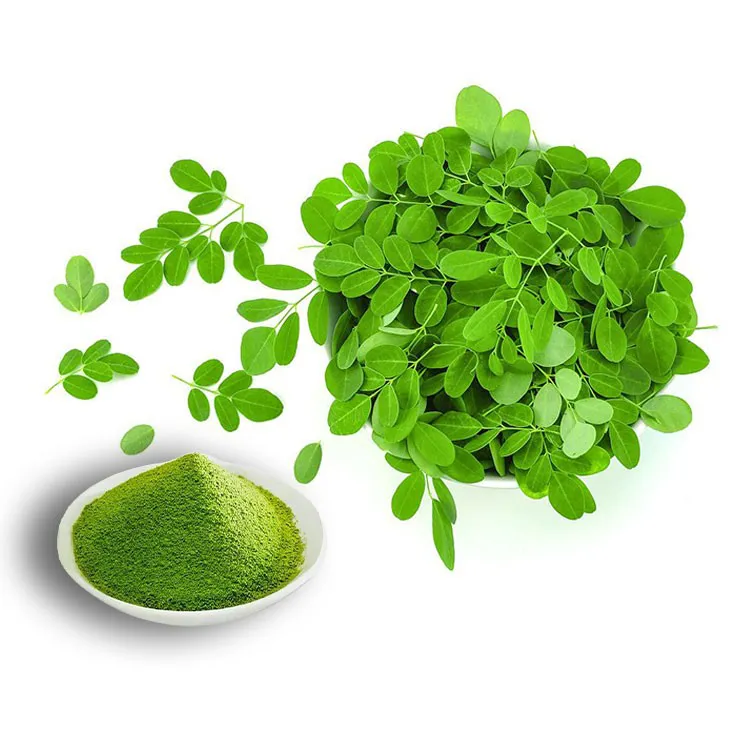- 0086-571-85302990
- sales@greenskybio.com
The Best Method for Extracting Moringa Powder.
2024-11-28

Introduction
Moringa, also known as the "miracle tree," has gained significant popularity in recent years due to its numerous health benefits. Moringa powder, which is rich in vitamins, minerals, and antioxidants, can be used in a variety of applications, including food supplements, cosmetics, and traditional medicine. However, the extraction method plays a crucial role in determining the quality and effectiveness of the Moringa powder. In this article, we will analyze multiple extraction strategies from scientific and practical perspectives, considering aspects like efficiency, cost - effectiveness, and environmental impact, aiming to offer comprehensive guidance on obtaining high - quality Moringa powder.

Traditional Extraction Methods
Drying and Grinding
- Harvesting: The first step in this method is to harvest the moringa leaves at the appropriate time. Moringa leaves are usually harvested when they are young and tender, as they contain higher levels of nutrients at this stage.
- Drying: After harvesting, the leaves need to be dried thoroughly. This can be done either by sun - drying or using a dehydrator. Sun - drying is a cost - effective method, but it may take longer and is subject to weather conditions. Dehydrators, on the other hand, can dry the leaves more quickly and evenly, but they require an initial investment.
- Grinding: Once the leaves are completely dried, they can be ground into a fine powder using a grinder. It is important to ensure that the grinder is clean and dry to prevent contamination.
This traditional method is relatively simple and does not require complex equipment. However, it may not be the most efficient in terms of extracting all the beneficial components from the moringa leaves. Some nutrients may be lost during the drying process, especially if the drying conditions are not optimal.
Solvent Extraction
- Selection of Solvent: Solvent extraction involves the use of a solvent to dissolve the desired components from the moringa leaves. Commonly used solvents include ethanol, methanol, and water. Ethanol and methanol are often preferred because they can dissolve a wide range of organic compounds, but they also pose some safety and environmental concerns due to their flammability and toxicity.
- Extraction Process: The moringa leaves are soaked in the solvent for a certain period of time, usually several hours to a few days, depending on the desired extraction efficiency. During this time, the solvent penetrates the leaf tissue and dissolves the target compounds. The mixture is then filtered to separate the liquid extract from the solid residue.
- Evaporation: The solvent in the liquid extract needs to be removed to obtain the moringa powder. This is typically done by evaporation, either at a low temperature under vacuum or by simple heating. However, care must be taken during evaporation to avoid overheating, which may damage the active components.
Solvent extraction can be more effective in extracting certain bioactive compounds compared to the drying and grinding method. However, it also has some drawbacks. The use of solvents can be expensive, and there are potential safety and environmental issues associated with their handling and disposal. Additionally, some solvents may leave residues in the final product, which may be undesirable for certain applications.

Modern and Advanced Extraction Methods
Supercritical Fluid Extraction (SFE)
- Principle of SFE: Supercritical fluid extraction is a relatively new and advanced technique that uses a supercritical fluid, usually carbon dioxide (CO₂), as the extraction solvent. A supercritical fluid has properties between those of a liquid and a gas, which allows it to penetrate the sample matrix more effectively and dissolve a wide range of compounds. CO₂ is a preferred supercritical fluid because it is non - toxic, non - flammable, and readily available.
- Extraction Process: In SFE, the moringa leaves are placed in a high - pressure extraction vessel. The supercritical CO₂ is then pumped into the vessel at a specific temperature and pressure. The CO₂ dissolves the desired components from the leaves, and the extract is then collected by reducing the pressure, which causes the CO₂ to return to its gaseous state, leaving behind the concentrated extract.
- Advantages: SFE has several advantages over traditional extraction methods. It is a more environmentally friendly process as it does not use harmful solvents. It can also be highly selective, allowing for the extraction of specific compounds while leaving others behind. Moreover, it can produce a high - quality extract with a relatively short extraction time.
- Disadvantages: However, SFE requires expensive equipment and high - pressure operation, which makes it less accessible for small - scale producers. The initial investment and operating costs are relatively high, which may limit its widespread application in the moringa powder extraction industry.
Ultrasonic - Assisted Extraction (UAE)
- Mechanism of UAE: Ultrasonic - assisted extraction utilizes ultrasonic waves to enhance the extraction process. The ultrasonic waves create cavitation bubbles in the extraction solvent, which collapse violently and generate high - pressure and high - temperature micro - environments. These micro - environments help to break down the cell walls of the moringa leaves, allowing the solvent to more easily access and dissolve the internal components.
- Extraction Procedure: The moringa leaves are placed in the extraction solvent, and ultrasonic waves are applied for a specific duration. The frequency and power of the ultrasonic waves can be adjusted according to the nature of the leaves and the desired extraction efficiency. After the ultrasonic treatment, the mixture is filtered to obtain the liquid extract, which can then be further processed to obtain the moringa powder.
- Benefits: UAE is a relatively simple and cost - effective method. It can significantly reduce the extraction time compared to traditional methods. It also has the potential to improve the extraction yield and the quality of the extract by more effectively disrupting the cell structure of the moringa leaves.
- Limitations: However, the effectiveness of UAE may be influenced by factors such as the type of solvent used, the ultrasonic parameters, and the characteristics of the moringa leaves. In some cases, over - exposure to ultrasonic waves may lead to the degradation of certain bioactive compounds.

Comparison of Different Extraction Methods
- Efficiency: Supercritical Fluid Extraction (SFE) and Ultrasonic - Assisted Extraction (UAE) generally show higher extraction efficiency compared to traditional drying and grinding and solvent extraction methods. SFE can selectively extract specific compounds, while UAE can break down cell walls more effectively, leading to a higher yield of desired components.
- Cost - effectiveness: Traditional drying and grinding is the most cost - effective method in terms of equipment and operating costs. Solvent extraction can be relatively expensive due to the cost of solvents and their disposal. SFE has high initial investment and operating costs, while UAE is relatively more affordable with simple equipment requirements.
- Environmental Impact: SFE is the most environmentally friendly method as it uses non - toxic and non - flammable carbon dioxide as the solvent. Solvent extraction may have a negative environmental impact due to the use of potentially harmful solvents. Drying and grinding and UAE have relatively lower environmental impacts, although UAE may consume some energy for generating ultrasonic waves.
- Quality of the Final Product: SFE and UAE can produce high - quality moringa powder with better preservation of bioactive compounds. Solvent extraction may leave solvent residues in the product, which may affect its quality for certain applications. Drying and grinding may result in some nutrient loss during the drying process.
Conclusion
Each extraction method for moringa powder has its own advantages and disadvantages. For small - scale producers or those with limited resources, traditional drying and grinding or ultrasonic - assisted extraction may be more suitable options due to their relatively lower cost and simplicity. However, for large - scale production and applications where high - quality and purity are crucial, supercritical fluid extraction may be the preferred method despite its higher cost. In general, when choosing an extraction method, it is important to consider factors such as efficiency, cost - effectiveness, environmental impact, and the quality requirements of the final product. By carefully evaluating these factors, producers can select the best method for extracting moringa powder to meet their specific needs.
FAQ:
Question 1: What are the main factors to consider when choosing a moringa powder extraction method?
When choosing a moringa powder extraction method, several main factors need to be considered. Firstly, efficiency is crucial. A high - efficiency method can ensure a large amount of moringa powder is obtained in a relatively short time. Secondly, cost - effectiveness is also important. The extraction process should not be too costly in terms of raw materials, equipment, and energy consumption. Thirdly, environmental impact cannot be ignored. Methods that produce less waste and pollution are more preferable. Additionally, the quality of the extracted moringa powder, such as its nutrient content and purity, is also a key consideration.
Question 2: Can you briefly introduce some common extraction methods for moringa powder?
Sure. One common method is the solvent extraction method. This involves using solvents to dissolve the active components in moringa leaves and then separating the solvent to obtain the powder. Another method is the mechanical extraction method, which typically uses machines to crush and grind moringa leaves to extract the powder. There is also the enzymatic extraction method, where enzymes are used to break down the cell walls of moringa leaves to facilitate the extraction of the powder.
Question 3: Which extraction method is the most cost - effective?
The most cost - effective extraction method may vary depending on different situations. In general, the mechanical extraction method may be relatively cost - effective in some cases. It does not require expensive solvents or complex enzymatic systems. However, if the scale of production is large, the solvent extraction method may also be cost - effective in terms of overall production efficiency and final product quality. It is necessary to conduct a comprehensive cost - benefit analysis based on specific production conditions such as raw material availability, labor costs, and equipment investment.
Question 4: How does the extraction method affect the quality of moringa powder?
Different extraction methods can have a significant impact on the quality of moringa powder. For example, if the extraction temperature or time is not properly controlled in the solvent extraction method, it may cause the degradation of some active ingredients in moringa powder, thus affecting its nutritional value. In the mechanical extraction method, if the grinding process is too rough, it may lead to a lower purity of the powder. On the other hand, the enzymatic extraction method, if the enzyme activity is not well - maintained, may also result in incomplete extraction and affect the quality of the final product.
Question 5: Are there any environmentally friendly extraction methods for moringa powder?
Yes, there are. For example, the mechanical extraction method is relatively environmentally friendly. Since it mainly uses physical crushing and grinding processes, it generally does not produce a large amount of chemical waste. In addition, some new - type extraction technologies are being developed, which aim to use more sustainable energy sources and biodegradable solvents, reducing the environmental impact during the extraction process.
Related literature
- Optimization of Moringa Powder Extraction Techniques"
- "A Comparative Study on Moringa Powder Extraction Methods"
- "Efficient and Sustainable Moringa Powder Extraction"
- ▶ Hesperidin
- ▶ Citrus Bioflavonoids
- ▶ Plant Extract
- ▶ lycopene
- ▶ Diosmin
- ▶ Grape seed extract
- ▶ Sea buckthorn Juice Powder
- ▶ Fruit Juice Powder
- ▶ Hops Extract
- ▶ Artichoke Extract
- ▶ Mushroom extract
- ▶ Astaxanthin
- ▶ Green Tea Extract
- ▶ Curcumin
- ▶ Horse Chestnut Extract
- ▶ Other Product
- ▶ Boswellia Serrata Extract
- ▶ Resveratrol
- ▶ Marigold Extract
- ▶ Grape Leaf Extract
- ▶ New Product
- ▶ Aminolevulinic acid
- ▶ Cranberry Extract
- ▶ Red Yeast Rice
- ▶ Red Wine Extract
-
Feverfew Extract
2024-11-28
-
Lemon Balm Extract
2024-11-28
-
American Ginseng Root Extract
2024-11-28
-
Tongkat Ali Extract
2024-11-28
-
Licorice Root Extract Powder
2024-11-28
-
Phellodendron Extract
2024-11-28
-
Boswellia Serrata Extract
2024-11-28
-
Alfalfa Meal
2024-11-28
-
Black Garlic Extract
2024-11-28
-
Yohimbine Bark Extract
2024-11-28





















